

| Company : Croisi Europe |
| Ship : MV La Belle de l'Adriatique |
| Journey Start : Thu 25 Jun 2026 |
| Journey End : Thu 02 Jul 2026 |
| Count Nights : 7 nights |
| Day | Date | Port | Arrival | Departure |
|---|---|---|---|---|
| 1 | 25.06 Thu | Dubrovnik / Croatia | 17:00 | |
| 2 | 26.06 Fri | Dubrovnik / Croatia | 21:45 | |
| 3 | 27.06 Sat | Rushing | 07:00 | 12:00 |
| 3 | 27.06 Sat | Korcula / Croatia | 14:00 | 23:00 |
| 4 | 28.06 Sun | Sibenik / Croatia | 10:00 | 23:00 |
| 5 | 29.06 Mon | Trogir / Croatia | 07:00 | 11:30 |
| 5 | 29.06 Mon | Split / Croatia | 14:00 | 23:00 |
| 6 | 30.06 Tue | Hvar / Croatia | 09:00 | 12:00 |
| 6 | 30.06 Tue | Still | 14:00 | 17:00 |
| 7 | 1.07 Wed | Kotor / Montenegro | 09:30 | 15:00 |
| 7 | 1.07 Wed | Dubrovnik / Croatia | 20:30 |
All inclusive on board:
All meals included - DRINKS INCLUDED with meals and at the bar
Refined French cuisine - Gala dinner and evening - Welcome cocktail
Free Wi-Fi onboard
Headsets are included for excursions
Official welcome from the captain and crew
Onboard activities
Travel assistance and repatriation insurance
All port fees included
Additional expenses:
Airfare and transfers to/from the departure and arrival ports
Personal expenses (e.g., souvenirs, extra drinks beyond those included)
Tips for crew and guides (recommended) from €9 per day per guest
Medical insurance (optional, at your own discretion)
Excursions and activities not included in the program
Additional onboard services (spa, massage, laundry, etc.)
PAYMENT AND BOOKING CONDITIONS:
A deposit 30 % is due within 4 days after confirmation if you pay credit card, bank transfer, or personal check. If you pay by credit card, you must sign an authorization form. If paying by wire transfer, the transfer must be received within 8 days after confirmation. Final payment is due at least 90 days prior to departure. Vouchers will be sent by email at 30 days prior to departure and only when full payment has been made. You are considered confirmed when we receive your deposit of 30 % of the price of the cruise, or, if you are confirmed within 90 days before departure, you are confirmed when we receive your full payment. Failure to pay the balance by the 90-day deadline is a default that entitles us to cancel your agreement and retain your deposit if you do not pay within eight days after notice of nonpayment.
CANCELLATION:
1) TRAVELLER’S RIGHT OF CANCELLATION
The traveller may cancel the contract at any time prior to the start of the trip or stay, subject to the payment of appropriate cancellation fees or, where applicable, standard cancellation fees charged by the organiser or retailer, in accordance with Article L. 211-14 I of the French Tourism Code.
2) CANCELLATION COSTS
In the event of cancellation by the customer, and in accordance with Article L 211-14 of the French Tourism Code, the sums paid will be reimbursed minus the cancellation fees per person specified below, depending on the date of cancellation in relation to the departure date, and the non-refundable costs of insurance, reservation fees and visa fees, as well as all other insurance and cancellation fees required by our suppliers. If one of the passengers in a double room or cabin cancels his/her reservation, the remaining passenger will have to pay the double room or cabin supplement for individual use. All cancellations must be sent to the seller by registered mail with acknowledgment of receipt..
Cost of cancelling CroisiEurope river cruises:
• More than 90 days before date of departure: 150 €, not including VAT, in administration fees will be charged per person (fees for themed-weekend and Christmas-market cruises are listed after)
• From 90 to 60 days: 20 % of total amount of cruise package
• From 59 to 30 days: 50 % of total amount of cruise package
• From 29 to 19 days: 60 % of total amount of cruise package
• From 18 to 9 days: 75 % of total amount of cruise package
• 8 days or less before departure: 100 % of total amount of cruise package
For CroisiEurope themed-weekend and Christmas-market river cruises, a cancellation fee of 50 €, not including VAT, will be charged per person at more than 90 days before departure. The fee schedule listed above remains unchanged for these cruises.
Cost of cancelling CroisiEurope seafaring cruises:
• More than 90 days before date of departure: 300 €, not including VAT, in administration fees will be charged per person
• From 90 to 60 days: 40 % of total amount of cruise package
• From 59 to 30 days: 60 % of total amount of cruise package
• From 29 to 9 days: 75 % of total amount of cruise package
• 8 days or less before departure: 100 % of total amount of cruise package
Cancellation terms and conditions above, the cancellation fees for CroisiEurope “New Year’s Eve” river and seafaring cruises are as follows:
• More than 90 days before date of departure: 300 €, not including
VAT, in administration fees will be charged per person
• From 90 to 60 days: 40 % of total amount of cruise package
• From 59 to 30 days: 60 % of total amount of cruise package
• From 29 to 20 days: 75 % of total amount of cruise package
• 19 days or less before departure: 100 % of total amount of cruise package
Cancellation fees for the cruises on the Mekong, Ganges, Nile and in Southern Africa:
• More than 90 days before date of departure: 300 €, not including VAT, in administration fees will be charged per person
• From 90 to 61 days: 35 % of total amount of cruise package
• From 60 to 31 days: 50 % of total amount of cruise package
• From 30 to 20 days: 70 % of total amount of cruise package
• From 19 to 9 days: 80 % of total amount of cruise package
• 8 days or less before departure: 100 % of total amount of cruise package
By accepting these general terms and conditions of sale, the traveller expressly acknowledges that he/she has been previously informed and agrees to the cancellation fees in the manner set out above.
IMPORTANT: All packages including air transport are subject to the general and specific cancellation conditions of the designated airline companies. In the event of cancellation by one or more passengers, the following cancellation conditions shall be applied:
• River, maritime and coastal services: pursuant to the general terms and conditions of CroisiEurope.
• Air transport: terms and conditions of the designated airline company, available on the web sites of the respective airlines or from our booking departments on request.
In addition, the amount of cancellation fees relating to land-based services (hotel, for example) will correspond to the amount of actual fees invoiced by the partner to CroisiEurope.
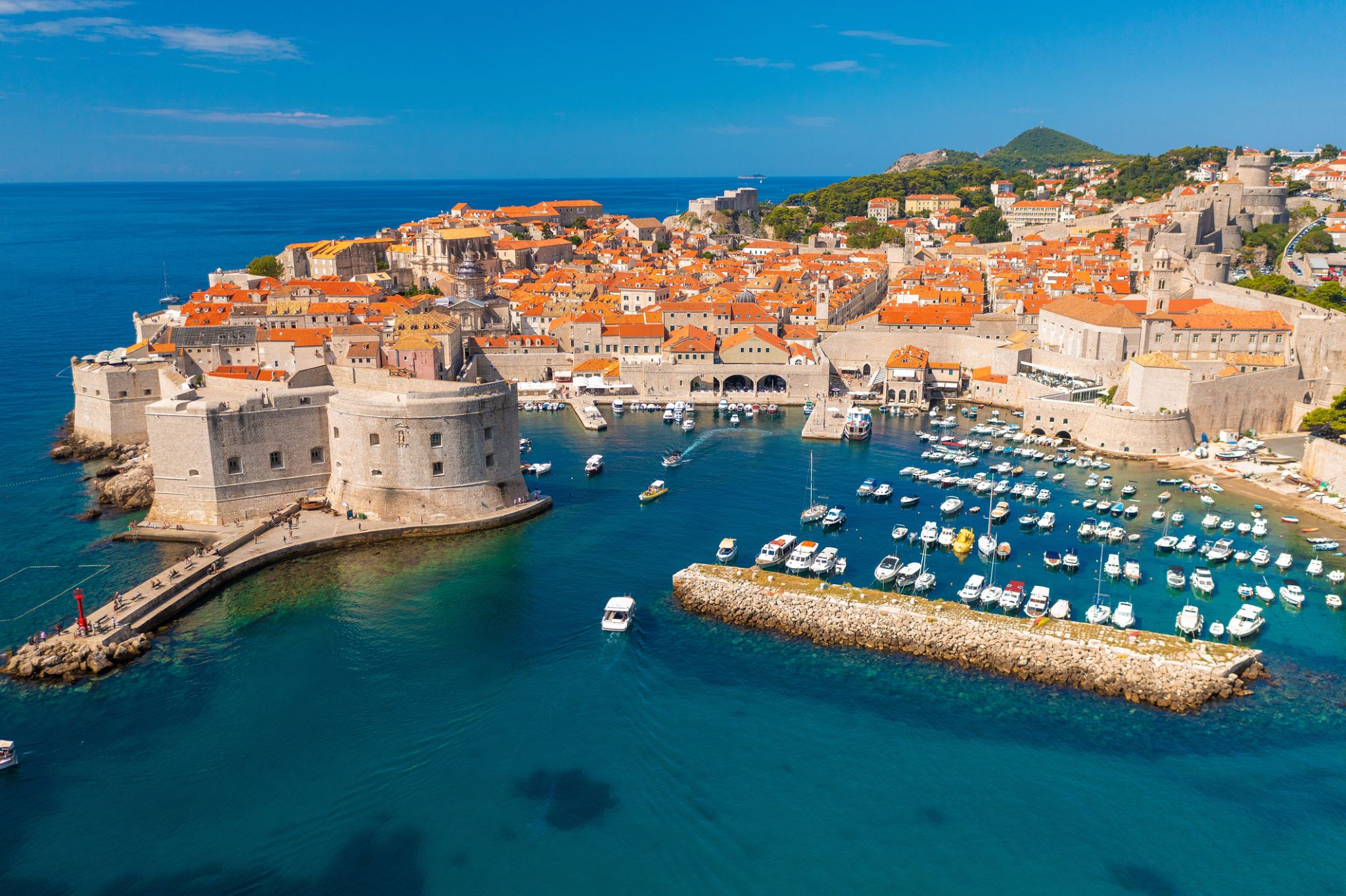
Dubrovnik is a Croatian city on the Adriatic Sea. It is one of the most prominent tourist destinations in the Mediterranean Sea, a seaport and the centre of Dubrovnik-Neretva County. Its total population is 42,615 (census 2011). In 1979, the city of Dubrovnik joined the UNESCO list of World Heritage sites.
The prosperity of the city was historically based on maritime trade; as the capital of the maritime Republic of Ragusa, it achieved a high level of development, particularly during the 15th and 16th centuries, as it became notable for its wealth and skilled diplomacy.
In 1991, after the break-up of Yugoslavia, Dubrovnik was besieged by Serbian and Montenegrin soldiers of the Yugoslav People's Army (JNA) for seven months and suffered significant damage from shelling. After repair and restoration works in the 1990s and early 2000s, Dubrovnik re-emerged as one of the top tourist destinations in the Mediterranean.

Dubrovnik is a Croatian city on the Adriatic Sea. It is one of the most prominent tourist destinations in the Mediterranean Sea, a seaport and the centre of Dubrovnik-Neretva County. Its total population is 42,615 (census 2011). In 1979, the city of Dubrovnik joined the UNESCO list of World Heritage sites.
The prosperity of the city was historically based on maritime trade; as the capital of the maritime Republic of Ragusa, it achieved a high level of development, particularly during the 15th and 16th centuries, as it became notable for its wealth and skilled diplomacy.
In 1991, after the break-up of Yugoslavia, Dubrovnik was besieged by Serbian and Montenegrin soldiers of the Yugoslav People's Army (JNA) for seven months and suffered significant damage from shelling. After repair and restoration works in the 1990s and early 2000s, Dubrovnik re-emerged as one of the top tourist destinations in the Mediterranean.
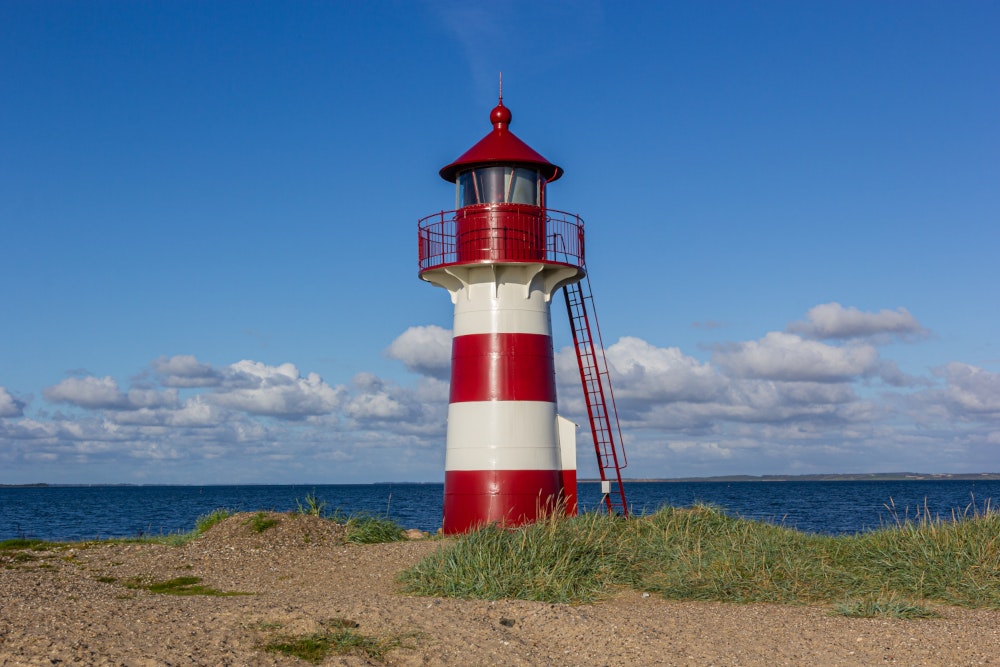
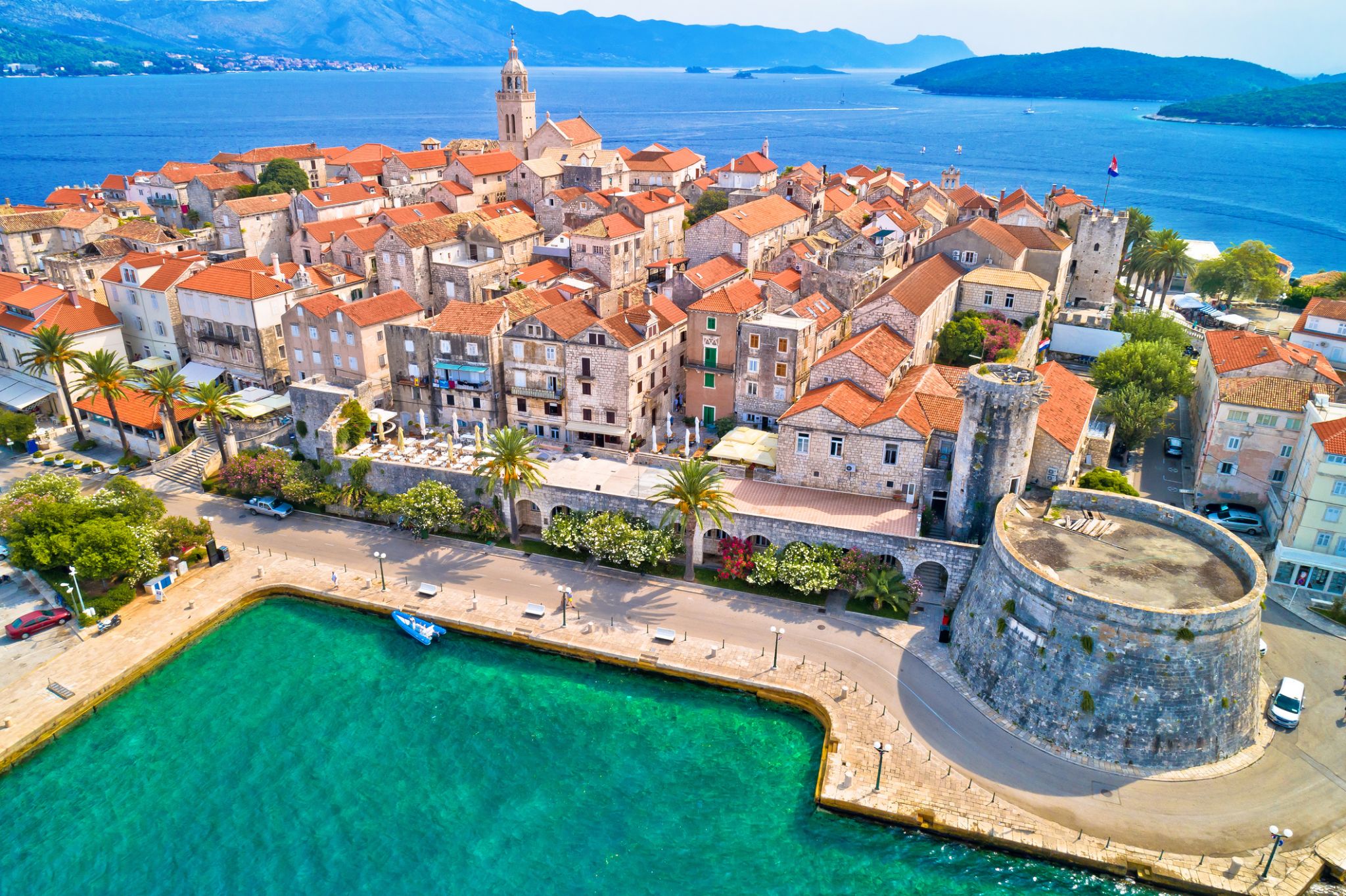
Korčula is a Croatian island in the Adriatic Sea. It has an area of 279 km2 (108 sq mi); 46.8 km (29.1 mi) long and on average 7.8 km (4.8 mi) wide — and lies just off the Dalmatian coast. Its 15,522 inhabitants (2011) make it the second most populous Adriatic island after Krk and the most populous Croatian island not connected to the mainland by a bridge. The population are almost entirely ethnic Croats (95.74%). The island is twinned with Rothesay in Scotland.
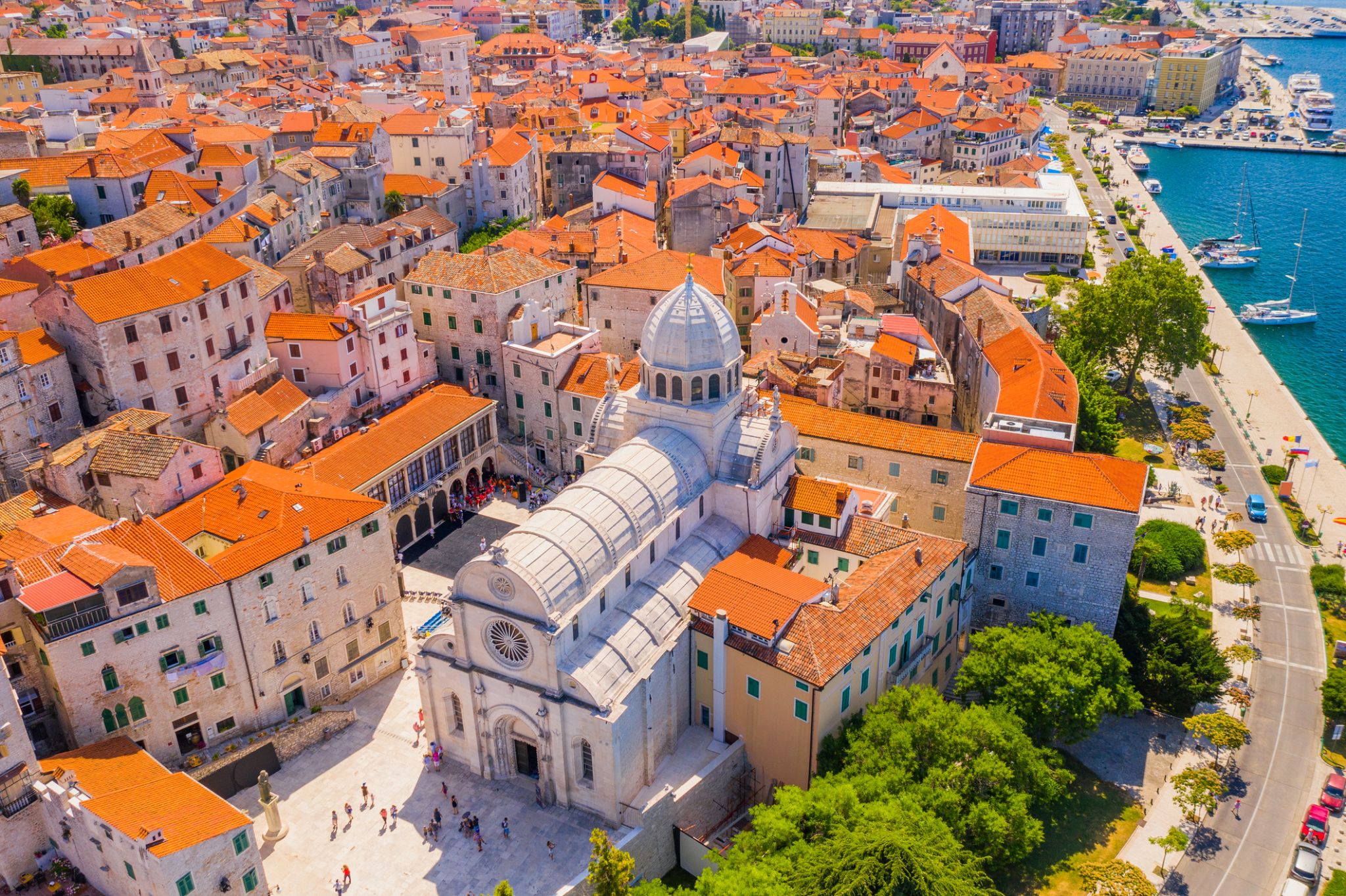
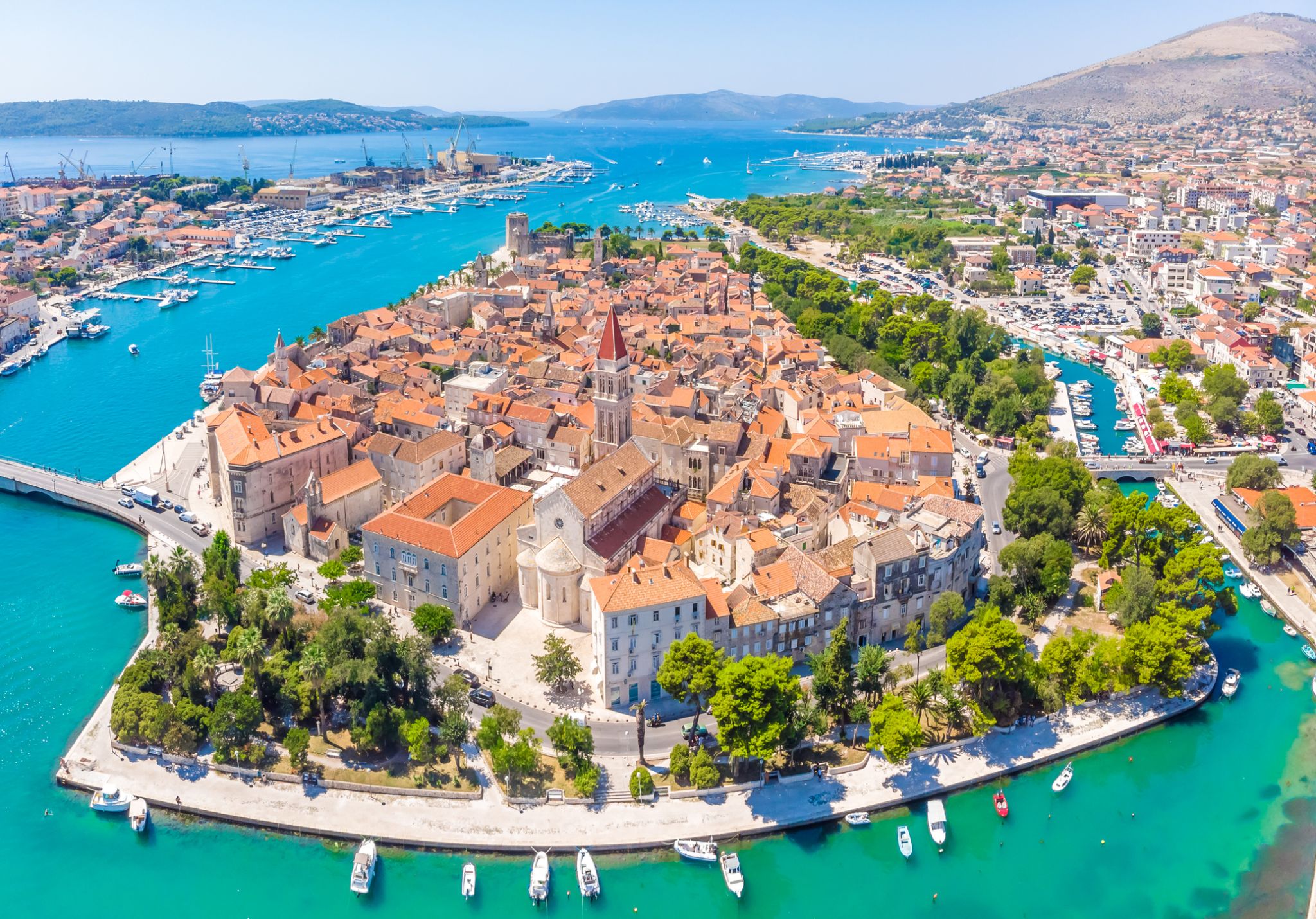
Trogir is a historic town and harbour on the Adriatic coast in Split-Dalmatia County, Croatia, with a population of 10,818 (2011) and a total municipality population of 13,260 (2011). The historic city of Trogir is situated on a small island between the Croatian mainland and the island of Čiovo. It lies 27 kilometres (17 miles) west of the city of Split.
Since 1997, the historic centre of Trogir has been included in the UNESCO list of World Heritage Sites for its Venetian architecture.
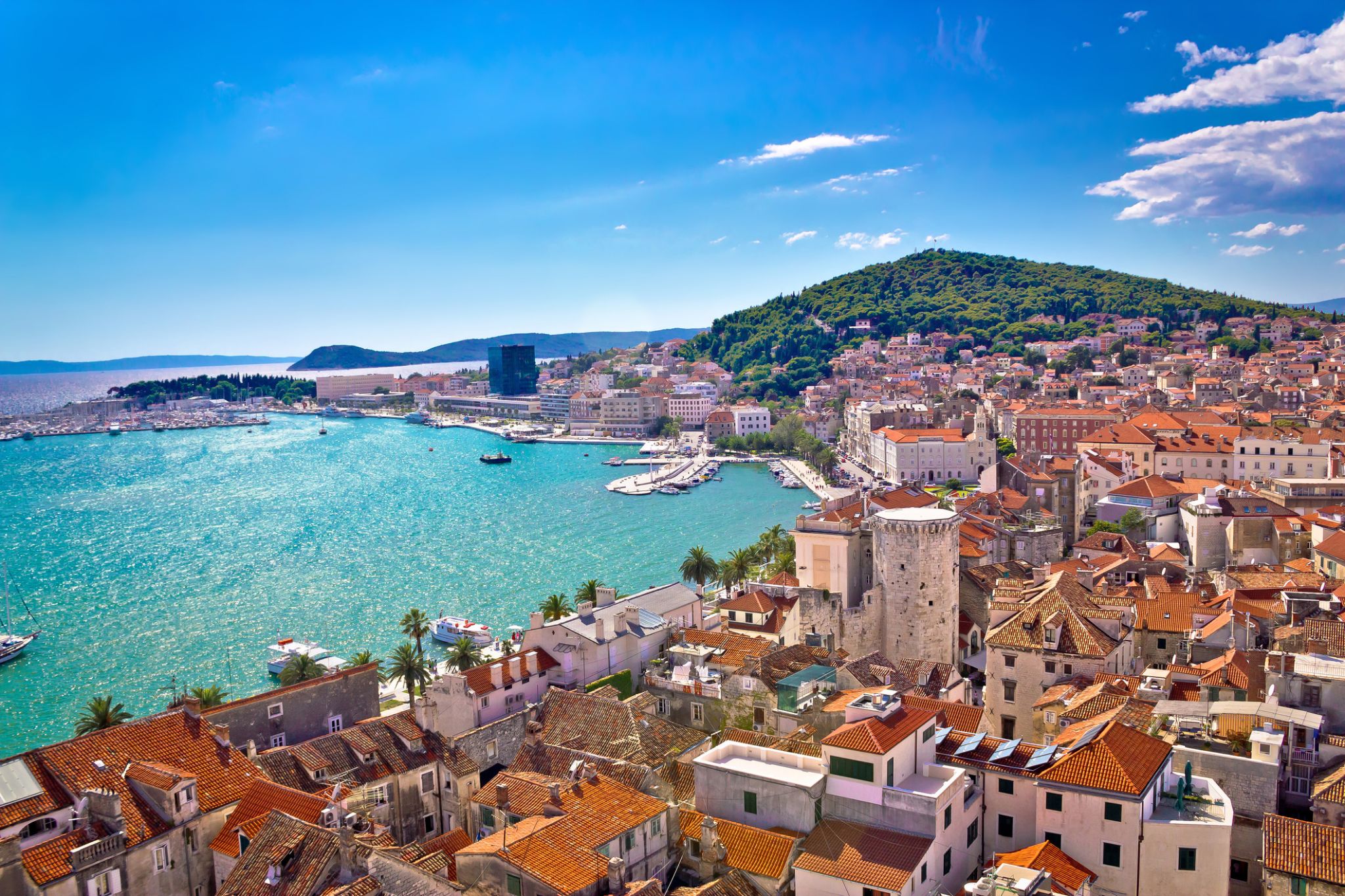
Split – the Pearl of Dalmatia
Split is Croatia’s second-largest city on the Adriatic coast. Its landmark is the Diocletian’s Palace, a UNESCO site, surrounded by narrow streets and the Cathedral of St. Domnius.
Life pulses along the Riva promenade, lined with cafés and restaurants. Nearby are beaches, including the famous Bacvice.
Split is also an important port, offering easy access to Croatian islands such as Hvar, Brač and Korčula. Its Mediterranean atmosphere and Dalmatian cuisine make it a perfect holiday destination.


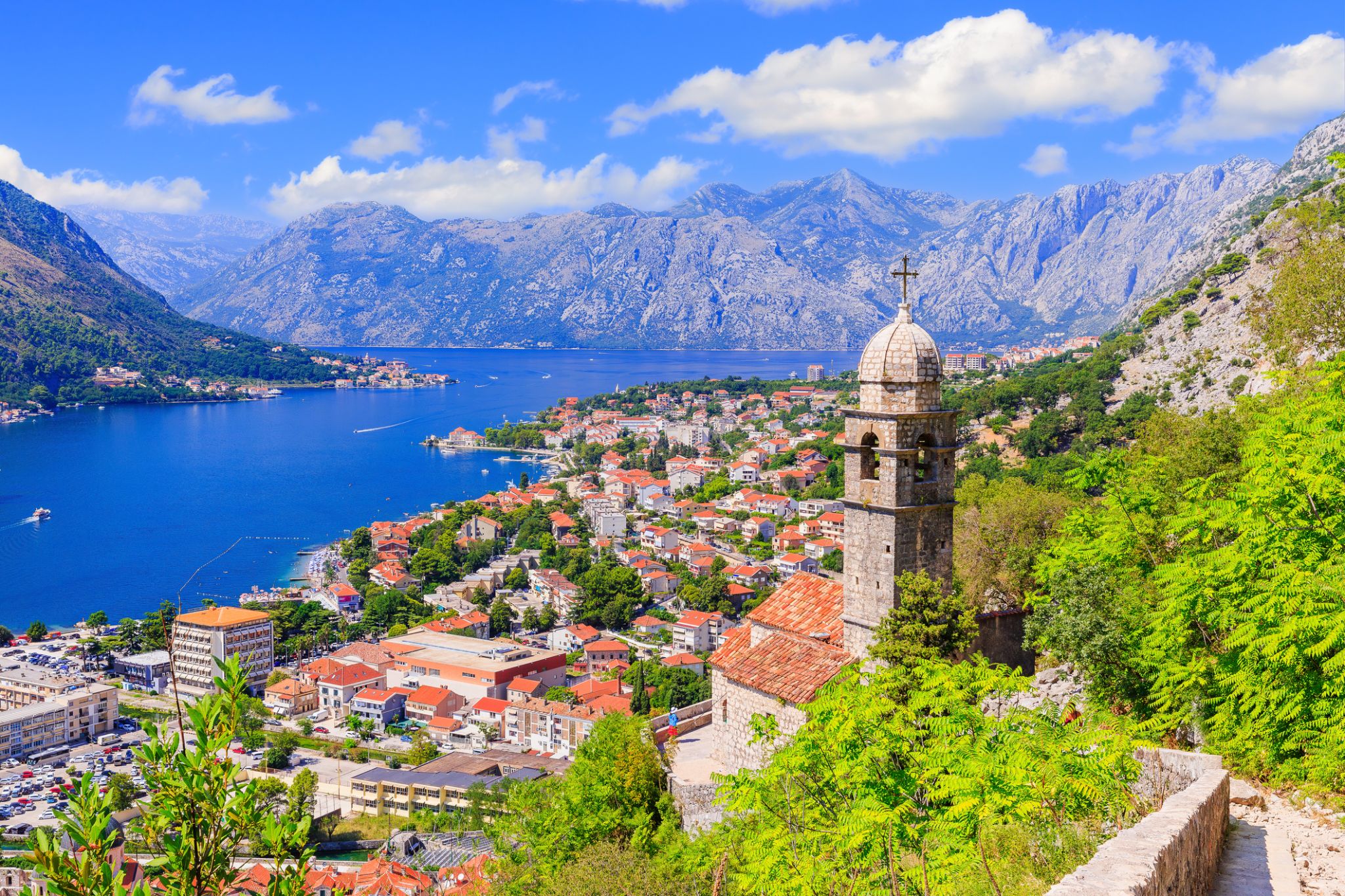
Kotor is a coastal town in Montenegro. It is located in a secluded part of the Gulf of Kotor. The city has a population of 13,510 and is the administrative center of Kotor Municipality.
The old Mediterranean port of Kotor is surrounded by fortifications built during the Venetian period. It is located on the Bay of Kotor (Boka Kotorska), one of the most indented parts of the Adriatic Sea. Some have called it the southern-most fjord in Europe, but it is a ria, a submerged river canyon. Together with the nearly overhanging limestone cliffs of Orjen and Lovćen, Kotor and its surrounding area form an impressive landscape.
Since the early 2000s Kotor has seen an increase in tourists , many of them coming by cruise ship. Visitors are attracted by the natural environment of the Gulf of Kotor and by the old town of Kotor. Kotor is part of the World Heritage Site dubbed the Natural and Culturo-Historical Region of Kotor.
The fortified city of Kotor was also included in UNESCO's World Heritage Site list as part of Venetian Works of Defence between 15th and 17th centuries: Stato da Terra – western Stato da Mar in 201

Dubrovnik is a Croatian city on the Adriatic Sea. It is one of the most prominent tourist destinations in the Mediterranean Sea, a seaport and the centre of Dubrovnik-Neretva County. Its total population is 42,615 (census 2011). In 1979, the city of Dubrovnik joined the UNESCO list of World Heritage sites.
The prosperity of the city was historically based on maritime trade; as the capital of the maritime Republic of Ragusa, it achieved a high level of development, particularly during the 15th and 16th centuries, as it became notable for its wealth and skilled diplomacy.
In 1991, after the break-up of Yugoslavia, Dubrovnik was besieged by Serbian and Montenegrin soldiers of the Yugoslav People's Army (JNA) for seven months and suffered significant damage from shelling. After repair and restoration works in the 1990s and early 2000s, Dubrovnik re-emerged as one of the top tourist destinations in the Mediterranean.